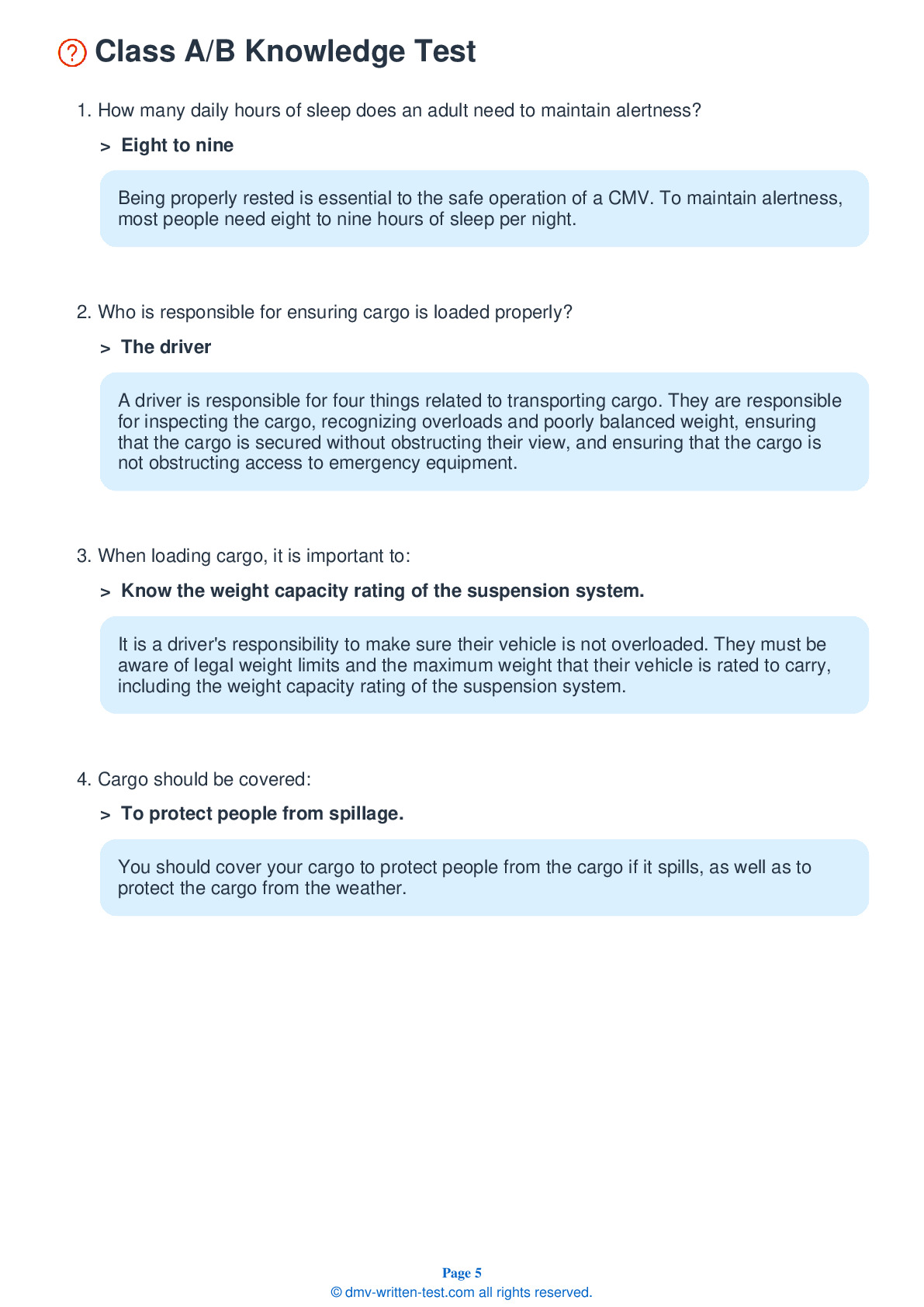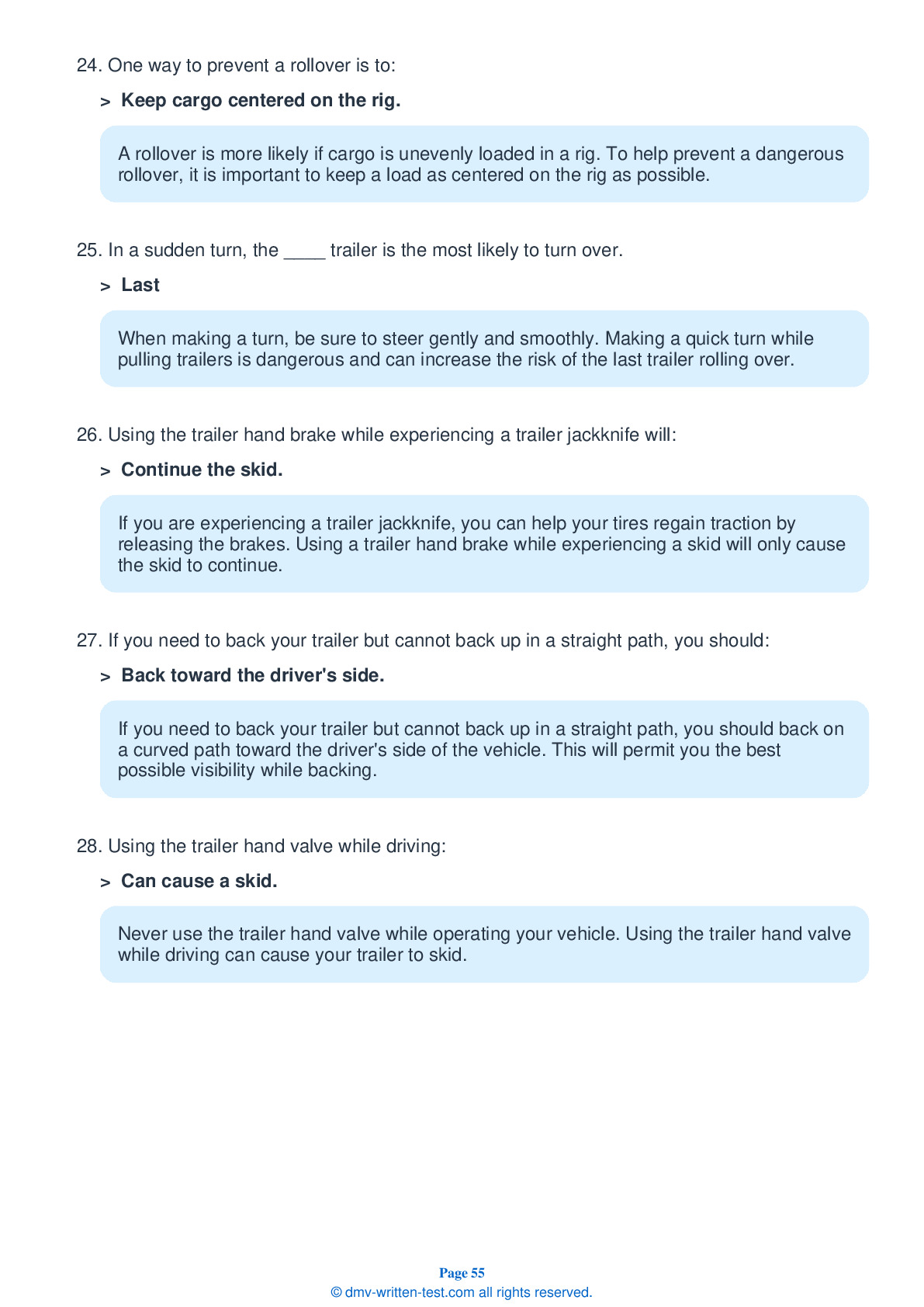Air Brakes
This endorsement is required for driving a vehicle with air brakes. To receive this endorsement, applicants must pass a written test. The test consists of 25 multiple choice questions. Each question has three answer choices. To pass, the applicant must answer at least 20 questions correctly. Test questions come from the Missouri Commercial Driver’s Manual. Questions come from the chapter covering: Air Brakes. The Air Brakes endorsement may be used with the Class A, B or C CDL.
Number of Question
Passing Score
13. What kind of force do emergency brakes use?
Explanation
Air brakes are really three different braking systems: the service brake, the parking brake, and the emergency brake. Emergency and parking brakes are applied with mechanical force.
14. Brake linings should be:
Explanation
Brake linings should not be loose or soaked with oil or grease. They shouldn't be dangerously thin.
15. Truck tractors with air brakes built on or after March 1, 1997 must have:
Explanation
Truck tractors with air brakes built on or after March 1, 1997, and other vehicles with air brakes built on or after March 1, 1998, must be equipped with anti-lock brakes.
16. If the safety relief valve in an air brake system is releasing air:
Explanation
The safety relief valve in an air brake system releases air if necessary to prevent pressure in the system from becoming too high. If the valve starts releasing air, there is something wrong. Have a mechanic fix the problem.
17. If air pressure drops to a level between ____, a visual low pressure warning signal should have already activated.
Explanation
A visual low pressure warning signal should activate before air pressure drops to a level between 55 and 75 psi. This signal could be a light, a buzzer, or a wig wag.
18. To ensure normal stopping power, drivers of vehicles equipped with a front brake limiting valve should:
Explanation




